It is easy to cross the border between fiction and reality, while diving in the imagery of Vincent Fournier, and this is not only because of the suspended atmosphere and the unusual representation of spaces and human figures. He explores the conceptual frontier between concreteness and imagination, between past and future, and in this intermediate parallel reality he identifies a non-space, the ideal scenario to document the possible forms of a possible future. Like a tireless narrator, he builds his stories through elements that are based on a tangible and familiar ground, which at the same time is also ethereal and impalpable, proposing a solemn and cinematographic staging, which with enchantment extends to what is and what’s not perceptible, made of imaginary universes, epic stories and futuristic utopias that cause a feeling of bewilderment and estrangement but simultaneously a sense of familiarity that lengthens the dream, making it in some way possible and including it in the sphere of things that, although they never happened, they echo in our memory like a deja vù.
 Iceland Moon Mars Simulation #11, MS2 Spacesuit, ISE, 2021 © Vincent Fournier / courtesy The Ravestijn Gallery
Iceland Moon Mars Simulation #11, MS2 Spacesuit, ISE, 2021 © Vincent Fournier / courtesy The Ravestijn GalleryPhotography thus provides new interpretations and alternative ways of describing reality, albeit unreal, contributing to the generation of a simulated space within the already “built” contemporary space. Moreover there is no present that cannot be established without referring to another time, to another “present”, the present is a trace as theorized by Derrida. It indicates that time gap with the present element of non-contemporaneity, which is in all aspects a space of freedom, since it is interpretable. The matter is all about understanding whether the human being is able to stop in this space of “uneasiness”, if he is up to conveying the trace. In my opinion Vincent Fournier is able to achieve this.
Vincent Fournier: My photographs and other works are allegories of childhood dreams where reality is mixing with fiction. They are stories where the meaning is floating from opposite themes : serious and playful, sense and non sense, reality and fiction, organic and artificial… like an encounter with Jules Verne and Jacques Tati. I think this feeling is linked to the world of childhood, when the meaning of things is blurred, when things can have a different meaning. My stories are fed from several mythologies of the future – space exploration, humanoid robots, the transformation of living things through technology or utopian architecture. It can be the past future or the future we imagine for tomorrow. How we see the Future is my main playground. Then the starting point is often a familiar, comfortable and aesthetic situation in which I introduce a disruptive agent. At the end I like my images to be somehow like UFOs! I’m looking for tension between support points and break points in between a documentary and fiction.
I believe this “obsession” comes from my childhood and many visits to the Palais de la Découverte in Paris with my grandmother. All these evocations of the “wonder of science” and the mysteries of the Universe have nourished my imagination and stimulated my curiosity for utopias and the field of possibilities. I also grew up in the 70s and 80s with many representations of the future, both in fiction but also in the development of technology, space exploration, internet, robotics, architecture. I still have a romantic vision of this future and maybe I am quite nostalgic about it! I know that it sounds completely out of date, but I think we need to feed our imagination with images of the future that are both credible and somehow attractive. It gives a perspective and a goal especially at a time when it is only a question of an eternal present, as if urgency had everywhere repudiated the future as a promise. For instance the space adventure proposes a perspective and a new angle to better see and understand our Earth from a distance.
I think my main inspiration comes again from the memories of my childhood: the first image that really struck me when I was ten was a reproduction of the The Hunters in the Snow by Pieter Bruegel the Elder. It’s a funny coincidence because you can see this painting in the movie Solaris by Andreï Tarkovski that was also an important reference for me. As a kid I was very fond of science fiction, from comics, to series and novels, I remembered as well that with some friends we rented the movie 2001: A Space Odyssey by S. Kubrick. It was a revelation: the aesthetics, the ideas, the narration. But not with my friends who all left before the end, I also listen to many podcasts about science, history, philosophy, art, and TV series as we all do! I have also been deeply influenced by “rationalist” compositions, such as the grids used by architects or graphic designers.
 Vincent Fournier, 2023
Vincent Fournier, 2023Space Utopia is a collection of strange terrestrial landscapes with which Vincent Fournier stimulates our imagination between reality and dream. They are visionary photographs on space exploration, which offer science fiction-like visions of missiles, astronauts, research stations and spectral scenarios. Fournier was able to create such stunning images through his collaboration with major space organizations such as NASA, ESA and the Russian space agency, as well as the world’s largest astronomical observatories. Therefore he had access to information on the first Sputnik and Apollo programs, on the future missions to Mars and on confidential projects such as NASA’s SLA rocket, which he transfigured and sublimated through his peculiar artistic vision of space exploration. Fournier’s intent is to induce us to question our perceptions of space and time and he suggests a reinterpretation of our past and future utopias, revisiting them with evocative images that recall myths and fantasies of mankind about the future. To achieve this, Vincent Fournier brings together innumerable subjects: from the clothing of Captain Boris, a Russian astronomer, in his daily space, to the Norwegian astronomical observatories and the Atacama desert, in Chile. From the multitude of antennas scattered in a field to the collaboration/interation between robots and men.
AZ: Can you tell me about this project and how do you perceive the relationship between man and machine? And what about technological progress?
VF: Space Utopia is my founding project, started in 2007 and is still going on. It tells the story of space exploration, from the memories of the space age to the new futuristic projects such as the NASA SLS launch vehicle which is expected to go to Mars. The strong relationship that I have created with the most representative space organizations around the world led me to see behind the doors that are normally kept tremendously secret. My latest images are from last December show the Artemis project, at the NASA Glenn Research Center, whose objective is to return to the Moon in order to develop a base (orbital station) that will serve as a starting point to go to Mars. The plane that looks like a “big whale” is the NASA Super Guppy, which carries the famous ORION capsule that will go to the Moon next year.
I love machines, the ones that fly, talk, count, observe… I am fascinated by the magic of science where the universe and the complexity of the world seem to be summed up in a few mathematical formulas. There is a certain irony in giving a visible and understandable picture of the mysteries of the universe. Waves, time, space, stars, light, all make sense. Observing, indexing, measuring, treating, the universe is not as perfectly organized as our machines. It acts irrationally, in a chaotic, violent and mysterious way.
 Space Project, Ergol #11, S1B clean room, Arianespace, Guiana Space Center [CGS], Kaurou, French Guiana, 2011 © Vincent Fournier / courtesy The Ravestijn Gallery
Space Project, Ergol #11, S1B clean room, Arianespace, Guiana Space Center [CGS], Kaurou, French Guiana, 2011 © Vincent Fournier / courtesy The Ravestijn Gallery Ergol #12, S1B clean room, Arianespace, Guiana Space Center [CGS], Kaurou, French Guiana, 2011 © Vincent Fournier / courtesy The Ravestijn Gallery
Ergol #12, S1B clean room, Arianespace, Guiana Space Center [CGS], Kaurou, French Guiana, 2011 © Vincent Fournier / courtesy The Ravestijn Gallery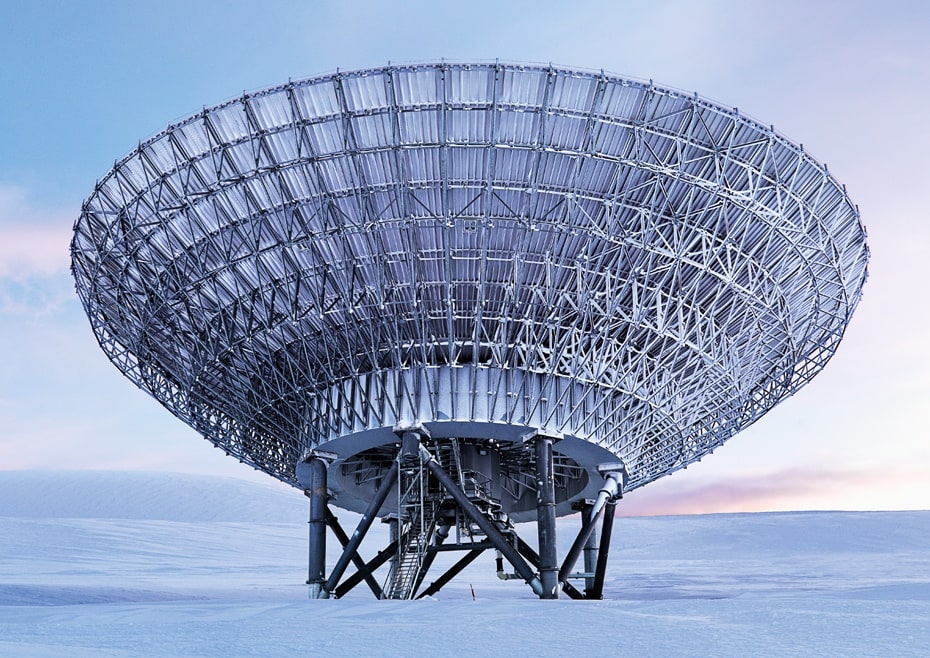 EISCAT Svalbard Radat [ESR], Spitsbergen Island, Norway, 2010 © Vincent Fournier / courtesy The Ravestijn Gallery
EISCAT Svalbard Radat [ESR], Spitsbergen Island, Norway, 2010 © Vincent Fournier / courtesy The Ravestijn GalleryThe cinematographic reference constitutes a fundamental element that has influenced the conceptual matrix from which his creativity is inspired. Stanley Kubrick’s 2001: A Space Odyssey, as stated by Fournier himself, was a source of inspiration for his imagery and in a certain sense is able to vividly describe the fundamental assumption of his creative process. The film, made in 1968, describes facts that refer to the year 2001. Inevitably it describes more the world of 1968 than that of 2001 but it continuously intertwines the past with the future, and places with non-places. The initial scene “the dawn of man”, as Fournier points out, shows an ancient past in which monkeys, in an atmosphere that feels permeated with sacredness, from harmless animals begin to transform into dangerous and violent beings, that is to say, into human beings.
This ancestral scene is connected with the future shown in the next scene, full of technology, space stations and spaceships flying to the rhythm of the waltz “The Blue Danube” by Johann Strauss. The realistic narration of the life of the astronauts on board a concrete place such as the spaceship DiscoveryOne and the final journey of astronaut David Bowman through a hallucinatory non-place, a psychedelic tunnel made of stars, nebulae, geometric figures and unknown worlds, which will take him to a surreal and white mansion furnished in a neoclassical style.
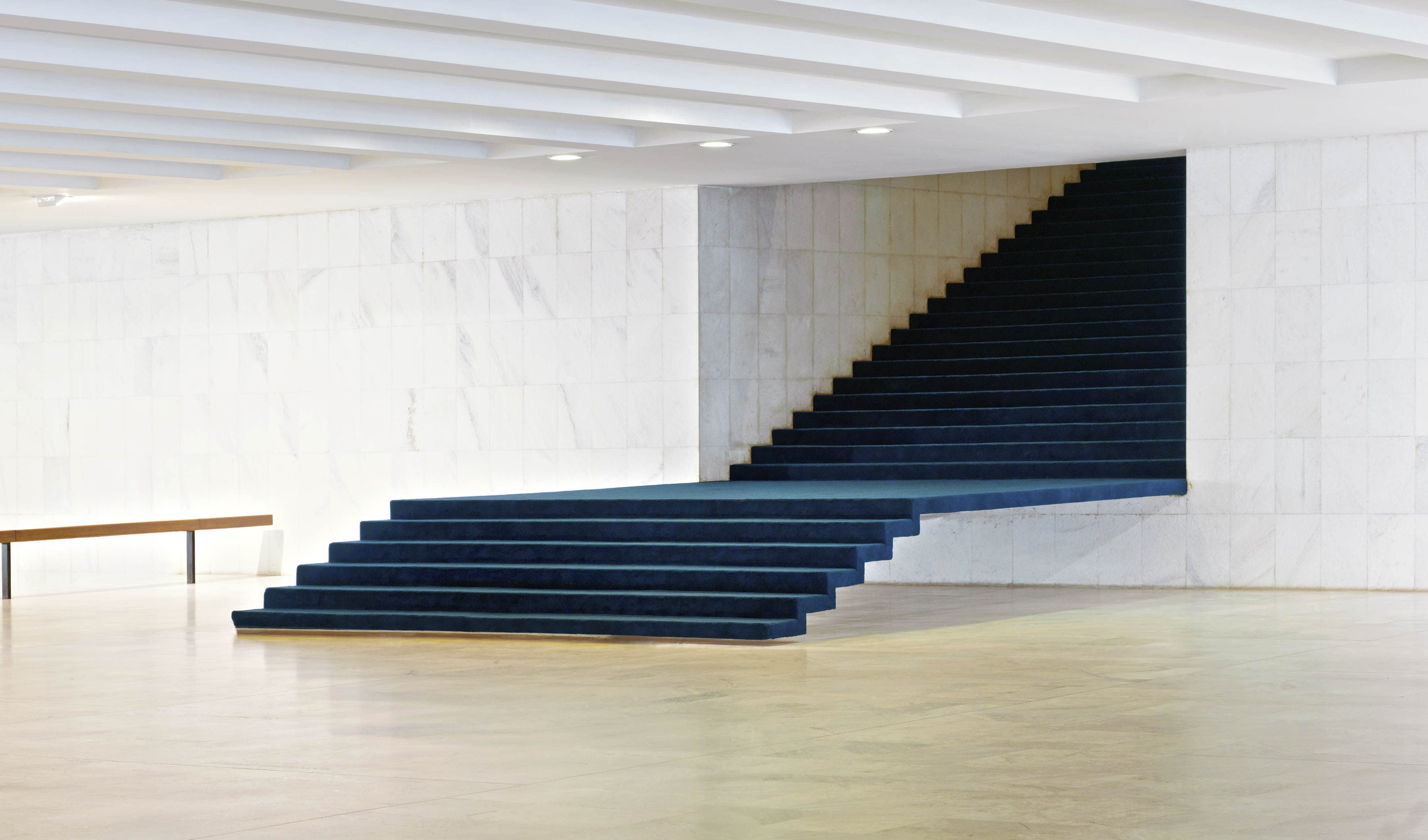 The Itamaraty Palace – Foreign Relations Ministry, stairs, Brasilia, 2012 © Vincent Fournier / courtesy The Ravestijn Gallery
The Itamaraty Palace – Foreign Relations Ministry, stairs, Brasilia, 2012 © Vincent Fournier / courtesy The Ravestijn Gallery
The architectural formalisms of the architect Niemeyer appear in Fournier’s photographs in Brasilia, they are almost like abandoned movie sets that recall the flavor of those by Jacques Tati. Built in the late 1950s according to the plans of the urban planner Lucío Costa, the landscape architect Roberto Burle Marx and the architect Oscar Niemeyer, Brasilia is an example of speculative architectural hypotheses for the future, which today, about sixty years after its creation, are still unspoken utopias, crystallized between past and present.
The contrast between the austere urban fabric of Brasilia made up of bureaucratic and governmental locations and the irrepressible liveliness of the streets of the Brazilian metropolises of Rio de Janeiro and Sao Paulo appears extremely striking, as an interesting spark that points out the transitions of the human element that is well distributed in Fournier’s work.In his landscapes, the French photographer, hovering between the dreamlike and reality, also shows normally unpublished spaces, such as engine rooms or training rooms for astronauts, places that, although concrete and real, appear at the same time as almost virtual, elusive and inaccessible.
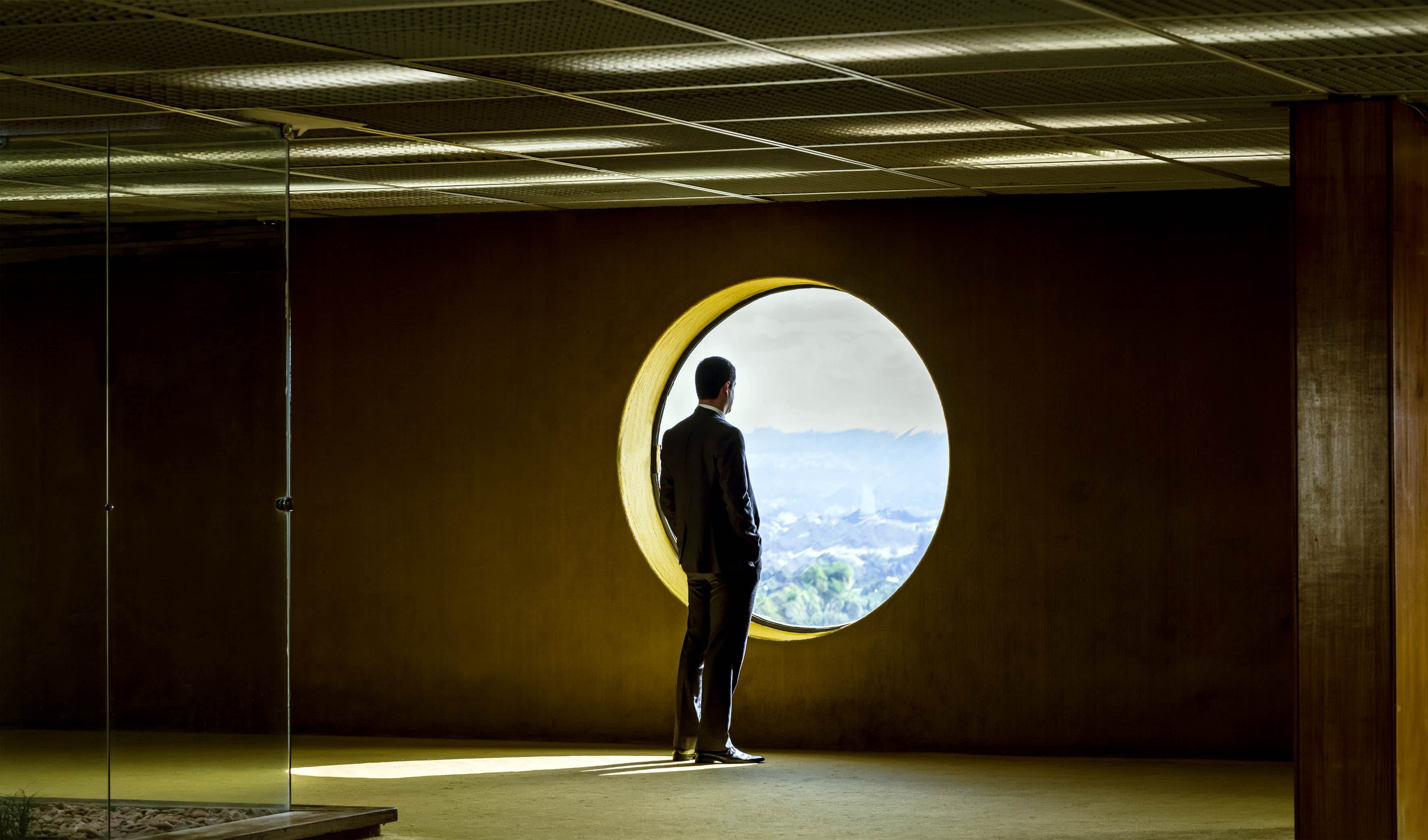 Chamber of Deputies [Annex IV] #3, Brasilia, 2012 © Vincent Fournier / courtesy The Ravestijn Gallery
Chamber of Deputies [Annex IV] #3, Brasilia, 2012 © Vincent Fournier / courtesy The Ravestijn Gallery
AZ: Can you tell me about your relationship with cinema, from Kubrik to Tarkovskij? And the relationship between staging space and architectural space? The one between space and the human figure (which in your representations is often “evident” for its lack rather than its excess)?
VF: I have made numerous film references along my work. David Cronenberg or Stanley Kubrick are amongst those directors who had such an influence on me because of their technological approach and the forward-thinking aspect of their work. Indeed, “Solaris” by Andrei Tarkovsky fascinated me and one can easily see this movie together with “2001, Space Odyssey” as heads and tails of the same coin. Both movies show the cosmic sphere as the reflection of intimacy and both directors actually question our perception of reality with unexpected spaces – always imaginary rather than real – or time inconsistencies, such as the final of “2001, Space Odyssey”, where you can see an astronaut evolving in a Louis XVI decor.
I also like Jacques Tati’s movies because his sense of humor has always been very close to the absurd. His vision of utopias was far ahead of his time even though it was also often satirical and of course I like him because of his aesthetic approach, very sharp, architectural and with several layers of meaning. It has certainly influenced my work about Brasilia that explores the utopian Future of this city which was born at the same time as the beginning of the space age. Indeed, the date of the “pilot plan”, conceived in 1957, coincides with the launch of the Sputnik, the first artificial satellite of the Earth. Brasilia was born at the beginning of the space age and the whole aesthetics of the city is largely inspired by it. It is the dream of space and the race towards the future that is embodied in a metaphorical and anticipatory way in the city’s architecture.
The portholes are reminiscent of those in Gagarin’s space capsule, the passageways connecting the various buildings evoke the long corridors of orbital stations and the architecture on stilts anticipates the “chicken legs” of future moon landing modules. The metaphor is even more obvious as with the National Museum surrounded by a ring of Saturn. Moreover, this city which has fantasized space and invented its own future, has remained frozen in time. Indeed, the city plan, identical since its origin, is registered since 1985 in the Unesco Heritage, which preserves it definitively from any change. Brasilia is therefore a bubble out of time, a time capsule where the dream of the future of the 60s is nostalgically offered. The book Brasilia – a Time capsule will be released in November with a text by the MET curator. Several images from the Brasilia series are part of the MET permanent collection.
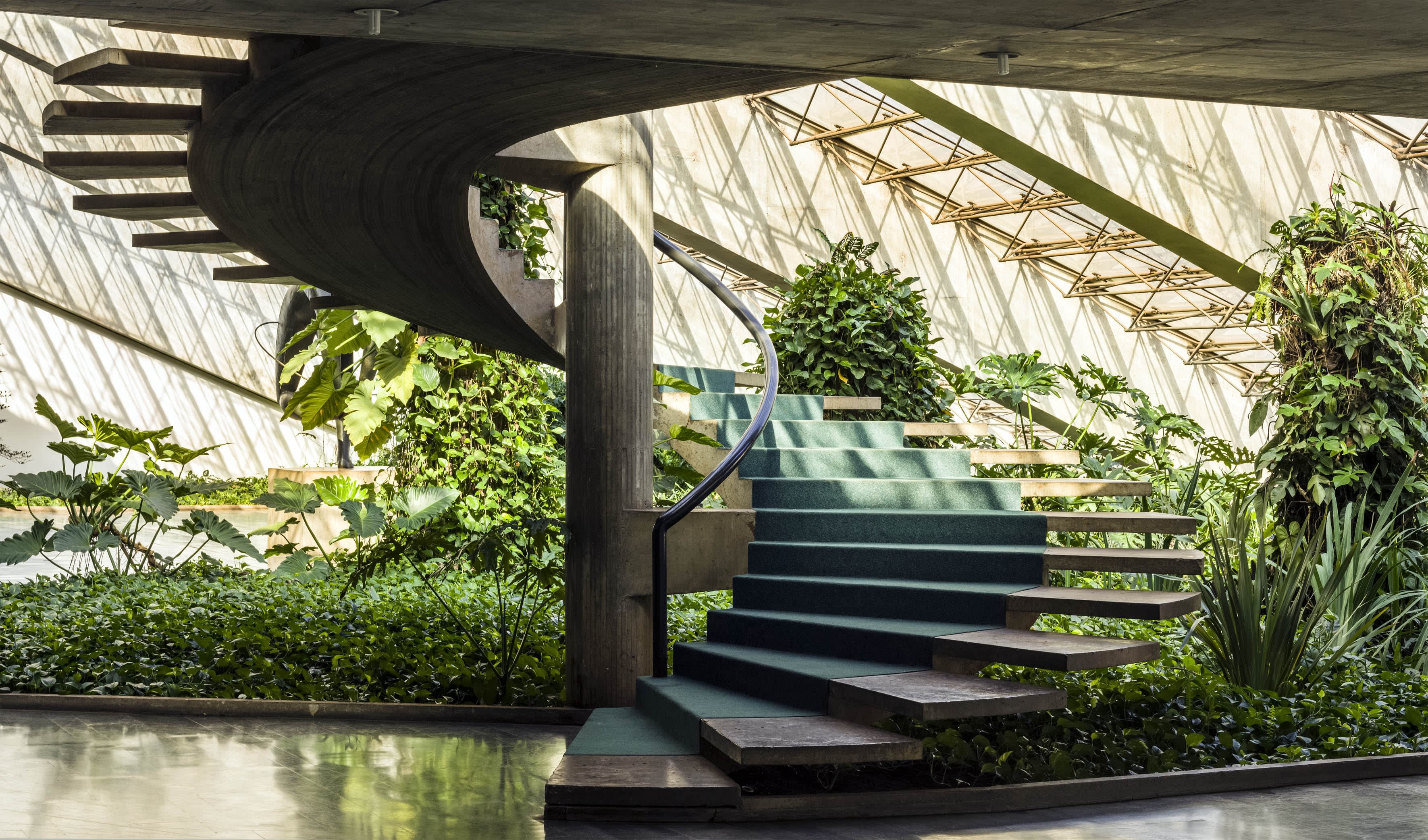
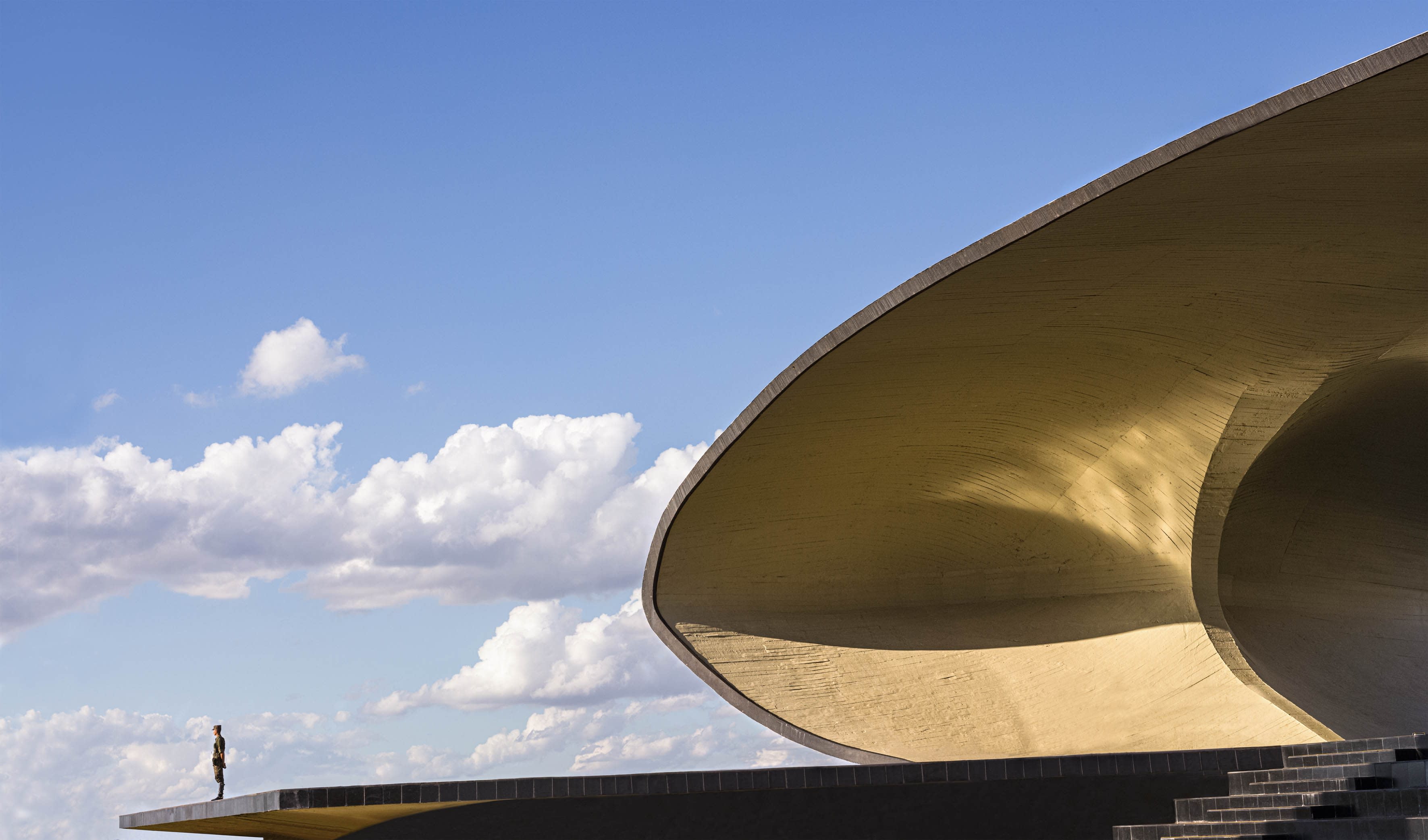 General Army Headquarters #1, Brasilia, 2019 © Vincent Fournier / courtesy The Ravestijn Gallery
General Army Headquarters #1, Brasilia, 2019 © Vincent Fournier / courtesy The Ravestijn Gallery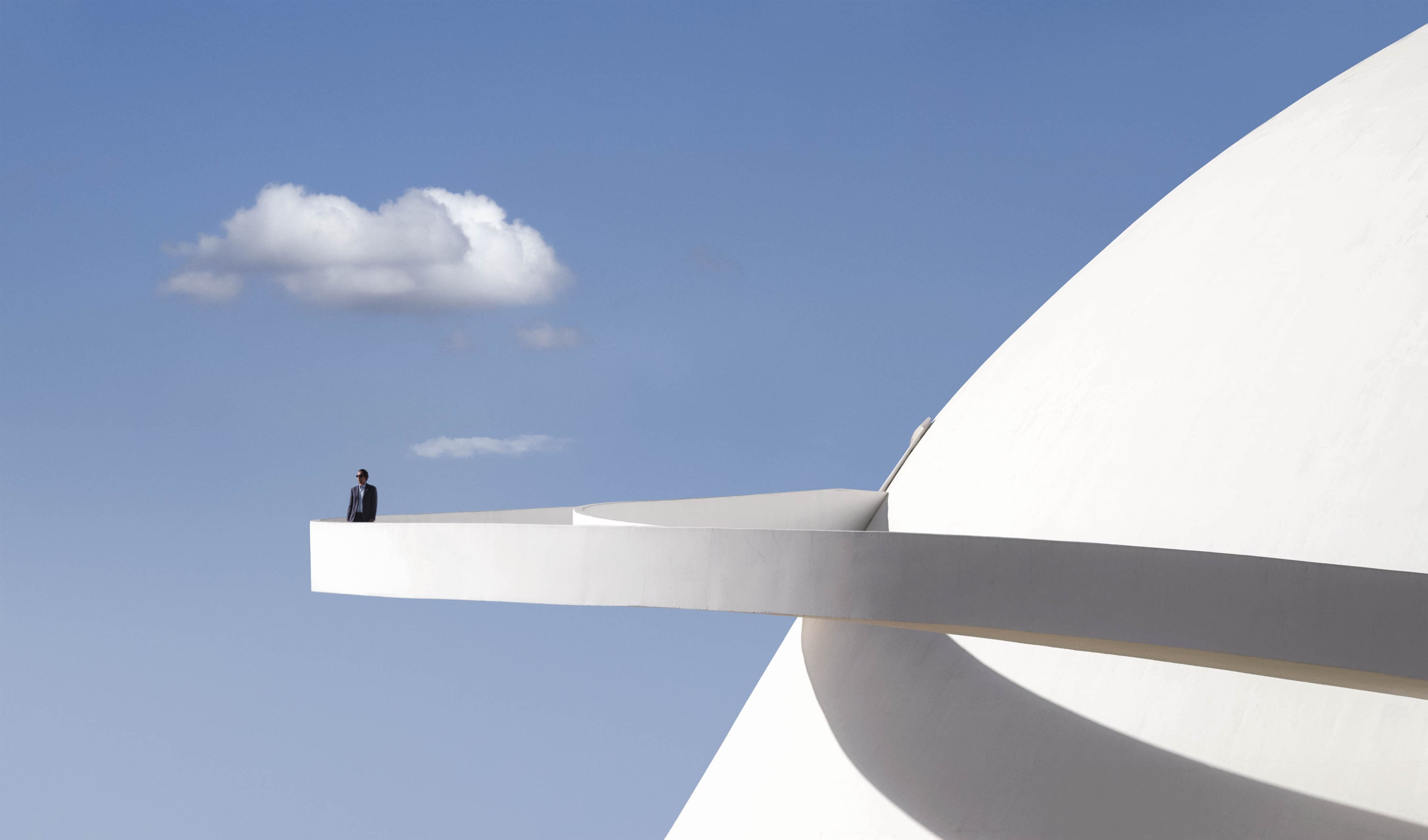 The National Museum #3, Brasilia, 2019 © Vincent Fournier / courtesy The Ravestijn Gallery
The National Museum #3, Brasilia, 2019 © Vincent Fournier / courtesy The Ravestijn GalleryThe documentary element confirms itself as another distinctive element of Fournier’s approach to the variables of what exists. In the Post Natural History project, Fournier imagines an extraordinary collection of upcoming living species, that mutated to adapt to changing environments and events. Are they the result of the adventures of a reckless space traveler committed to visiting unknown worlds and cataloging new forms of life? The combination of the traveler/collector figure strikes me as spontaneous and evocative. Fournier like Captain James T. Kirk of the famous TV series Star Trek, set in the future, which tells the adventures of the crew of the Starship Enterprise of the United Federation of Planets, “dedicated to the exploration of new worlds, in search of other forms of life and civilization, to get where no man has gone before”.
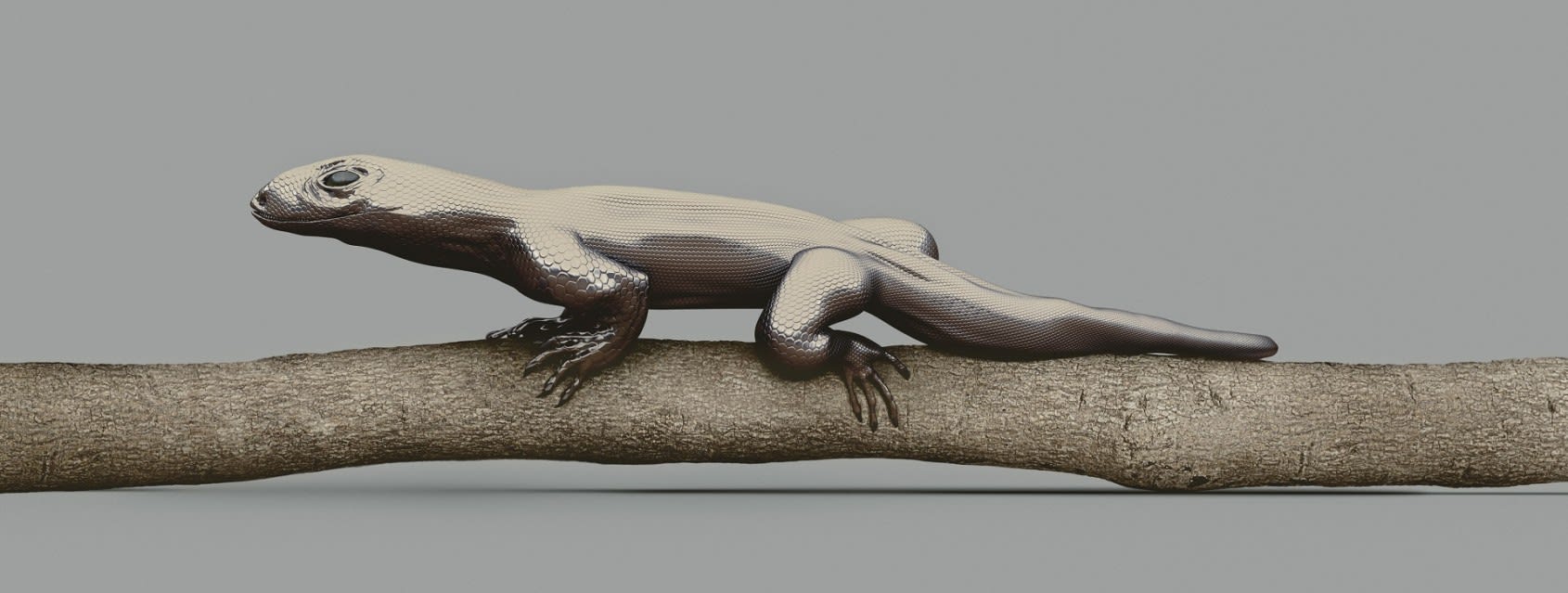
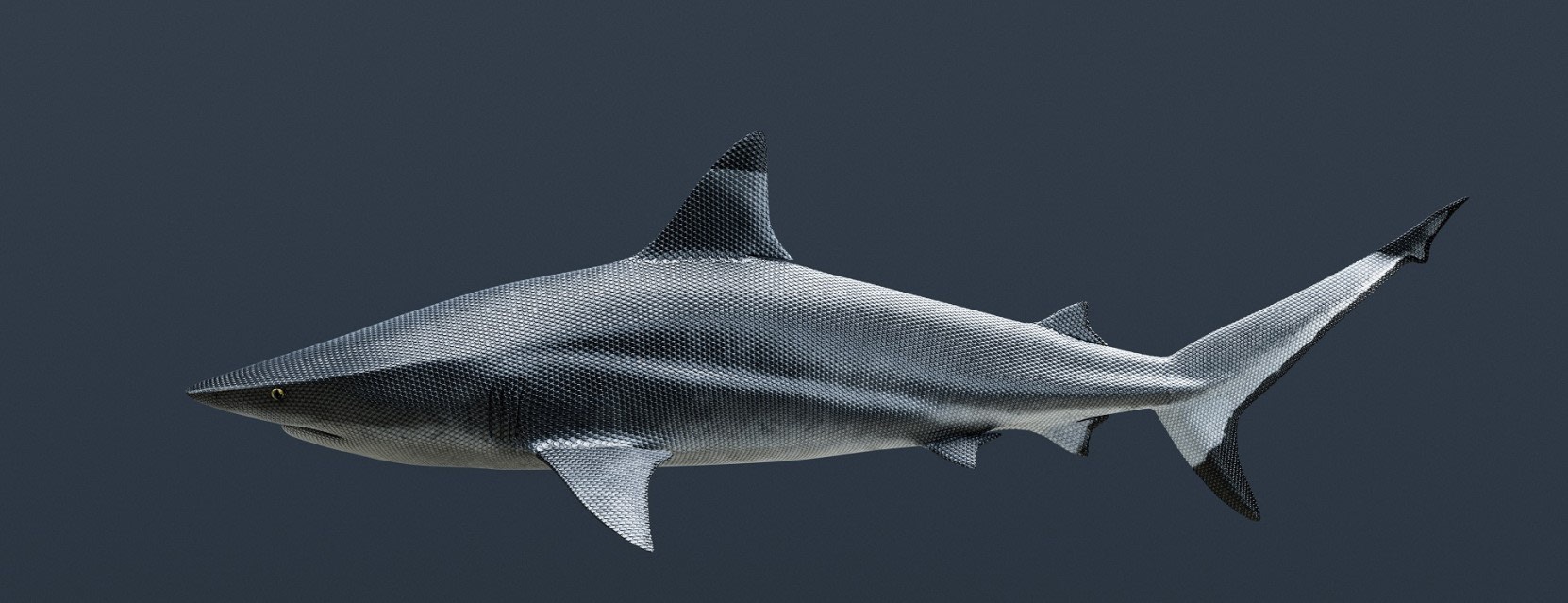 The Bestiary [Post Natural History – Cycle II] High Speed Shark [Squalus moleculo]
The Bestiary [Post Natural History – Cycle II] High Speed Shark [Squalus moleculo]
AZ: Can you tell me something more about the Post Natural History project?
VF: With my last body of work, Post Natural History I am telling the story of the transformation of life using technology. I think for the first time in History man has the tools to transform, create, reprogram the living and merge it with the non-living. This future is much further away so we don’t have images yet, that is why this body of work is based more on our imagination. It is inspired by synthetic biology and also by Surrealism. I think biotechnology and Surrealism both share a fascination with mixing things that have nothing in common. They both create strange, hybrid and uncanny species, composed, cut and pasted, of different parts just like a chimera or an “exquisite” corpse.
The Post Natural History is composed of 3 cycles. The first cycle is called the Flesh Flowers. It shows the result of tissue engineering techniques that create artificial flesh using edible plants. And what I am presenting are the remains of those flesh flowers, their skeletons. This work is made with 3D printing. The second cycle is a bestiary of upcoming species inspired by medieval bestiaries. Those strange and hybrid creatures are the mirror of our wishes, hopes and fears. The bestiary is presented just like a curiosity cabinet. Each image of the species is like a taxonomic illustration with a plate describing their particular features. Those creatures are engineered species with special features designed by man. For instance if you take a closer look at the scorpion, you will realize that this is not just a scorpion but also a remote controlled robot which is able to perform surgical operations. A closer look at the body of the dragonfly makes you realize that it contains sensors that measure the quality of air, or the Fennec is able of mind-reading.
The last cycle is called The Unbreakable Heart. After being created outside the body, the technology is going inside the body. And what organ is more symbolic than the heart? So I have created the first advanced unbreakable heart made of gold and lead, and designed to live forever. As in my other works I forged a link between the past and the future. This unbreakable heart is inspired by alchemy, which sought to turn lead into gold in order to create the elixir of life, but it also echoes the desires to live forever of the transhumanists and the Silicon Valley. And since living forever is quite expensive, this advanced organ is made of pure gold and set with precious stones.
